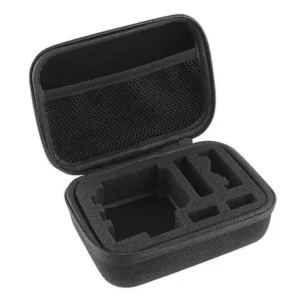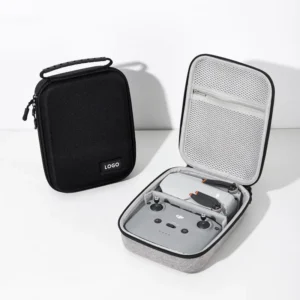What Are the Common Applications of EVA?
EVA (Ethylene-Vinyl Acetate Copolymer) is a versatile material known for its softness, elasticity, and resistance to water and chemical corrosion. It is widely used across multiple industries, from footwear manufacturing to packaging solutions. In recent years, EVA consumption in China has been steadily increasing, especially in the production of high-performance cases and bags. While EVA is only one of many materials available for packaging, its performance characteristics make it a preferred choice for many protective applications.
Below are the main application areas for EVA in different industries.

EVA in Foamed Footwear Materials
Foamed EVA is the largest application market for EVA resin. Footwear-grade EVA typically contains 15%–22% vinyl acetate, giving it a soft, elastic, and chemically resistant structure. It is commonly used in midsoles and insoles for high-end sports shoes, hiking boots, slippers, and sandals, providing excellent cushioning and shock absorption. EVA foam is also used in making sound insulation boards, gym mats, and sealing materials—showing its versatility beyond footwear.
EVA in Film Applications
EVA is widely used in agricultural and industrial film production, especially functional greenhouse films. Compared to standard polyethylene films, EVA-based films offer better weather resistance, anti-fog performance, and heat retention. These benefits make them ideal for agricultural use, maintaining transparency and preventing fogging for over four months.
In the packaging sector, EVA films are also used for medical packaging, laminated films, casting films, and especially as encapsulation layers for solar panels in the photovoltaic industry due to their excellent optical and bonding properties.
EVA in Wires and Cables
EVA is also an important component in the wire and cable industry. With the growing demand for halogen-free flame-retardant cables, EVA’s excellent filler compatibility and crosslinking properties make it suitable for insulation and sheathing in low-smoke, halogen-free flame-retardant cables, semiconductor shielding cables, and silane crosslinked cables. The material helps improve flexibility, weather resistance, and product lifespan, making it a valuable option for specialized electrical applications.
EVA in the Toy Industry
EVA foam is widely used in toys due to its safety, softness, and durability. It meets strict international safety standards such as the EU EN71 toy safety certification, making it a popular choice for children’s play mats, building blocks, ride-on toys, stroller wheels, and seat cushions. EVA-based toy products are non-toxic, odorless, and lightweight, ensuring both safety and comfort.
EVA in Hot Melt Adhesives
EVA resin is also a primary ingredient in hot melt adhesives. EVA-based hot melt glues are solvent-free, non-toxic, and environmentally friendly, making them safe for automated production lines. They are used in:
Perfect binding for books
Furniture edge banding
Automotive and home appliance assembly
Footwear manufacturing
Carpet coatings
Metal anti-corrosion coatings
The fast bonding and high-strength characteristics of EVA hot melt adhesives make them suitable for high-speed packaging and manufacturing operations.
EVA in Packaging and Case Manufacturing
One of the fastest-growing application areas for EVA is protective packaging and case manufacturing. EVA foam inserts are widely used in tool cases, medical kits, game console cases, cosmetic bags, hat boxes, massage gun cases, and more. The material’s shock absorption, waterproofing, and compression resistance make it ideal for protecting fragile items during transport.
EVA cases are often used in:
Tool bags for hardware storage
Medical cases for instruments and first-aid supplies
Gaming console cases for PlayStation, Xbox, or Nintendo Switch
Over-ear headphone cases for audio gear
Cosmetic travel cases for beauty and skincare products
Hat boxes for delicate headwear
Massage gun storage cases for fitness equipment
Eyewear cases and bottle packaging for retail
In most applications, EVA is used as an internal cushioning or molded insert, paired with external materials like nylon fabric or PU leather to create lightweight yet durable protective cases. These hybrid constructions enhance product safety, improve aesthetics, and add commercial value for packaging buyers and case manufacturers in industries ranging from tools to cosmetics and electronics.
Final Thoughts
From footwear and films to cables, toys, adhesives, and packaging cases, EVA plays a vital role in enhancing product performance and protection. For the case and bag industry, EVA’s lightweight, durable, and shock-absorbing properties make it an ideal material for creating functional and high-value packaging solutions. As material technologies evolve, EVA will continue to be an essential option alongside other advanced materials, offering even more innovative protective packaging solutions for global markets.





